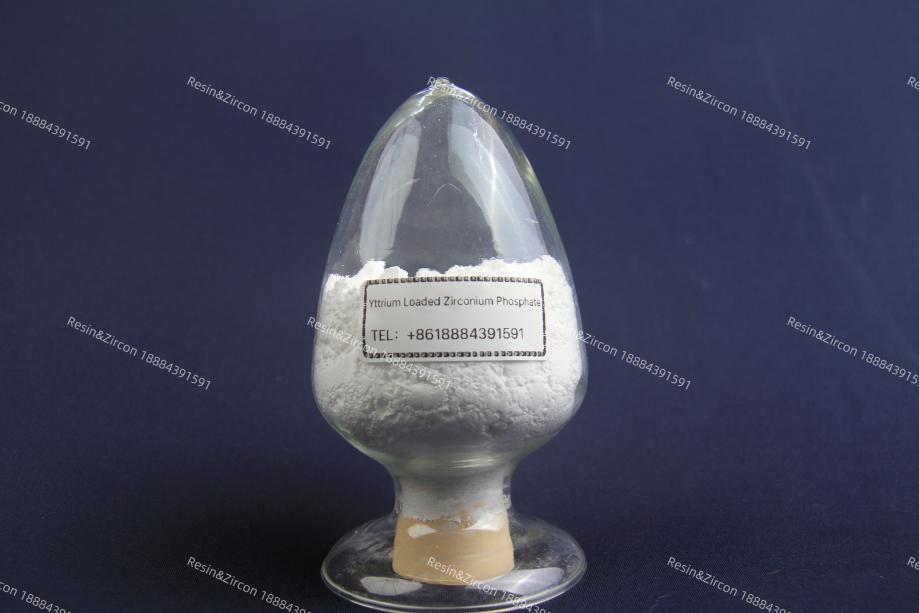Yttrium Loaded Zirconium Phosphate
Yttrium Zirconium Phosphate (YZP) is an inorganic compound with the chemical formula YPO₄·Zr₃(PO₄)₄. It typically refers to yttrium-doped or modified zirconium phosphate materials, such as Y-doped ZrP or Y-ZrP. These materials are modified by introducing the rare earth element yttrium (Y) into zirconium phosphate (ZrP), resulting in a tetragonal crystal system with a stable structure. This modification aims to optimize the material's structural stability, ionic conductivity, or catalytic performance.

Scope of Application:
Ceramic materials: used to manufacture high performance ceramics.
Catalyst: As a catalyst carrier; the surface yttrium site can enhance the solid acidity and be used for esterification, alkylation and other reactions.
Nuclear waste treatment: used to fix nuclear waste, the radiation stability of yttrium makes it suitable for solidifying highly radioactive nuclides (such as actinides) to form a stable ceramic matrix (similar to yttrium-stable ZrO₂).
Optical materials: used in laser and fluorescence materials.
Gas sensor: The sensitivity of CO, NOₓ and other gases is related to the concentration of yttrium doping, which can be used for environmental monitoring.
Lithium/sodium-ion batteries: Yttrium doping stabilizes the crystal structure of lithium zirconium phosphate (LiZr₂(PO₄)₃), inhibits phase transitions during charging and discharging processes, and extends cycle life. For example, the YₓLi₁₋ₓZr₂₋ₓ(PO₄)₃ system may exhibit higher ionic conductivity.
1. Product features
1.1 Physical properties:
-High melting point: suitable for high temperature applications.
-High hardness: good wear resistance.
-Low thermal expansion coefficient: excellent thermal stability.
1.2 Chemical properties:
-Chemical inertness: resistant to acid and alkali corrosion.
-Thermal stability: remains stable at high temperatures.
2. Recommended Additions
2.1 For nuclear waste adsorption or stabilization treatment, it is usually recommended that the amount of addition be in the range of 0.5-5%.
2.2 For catalytic reactions, the introduction of yttrium can regulate the acidic site, and the recommended amount is 1-10wt%.
2.3 For ceramic reinforcement or solid electrolyte, yttrium can be used to improve thermal stability, and the recommended addition amount is 3-10% (refer to the proportion of silver added in ceramics).

Follow WeChat


